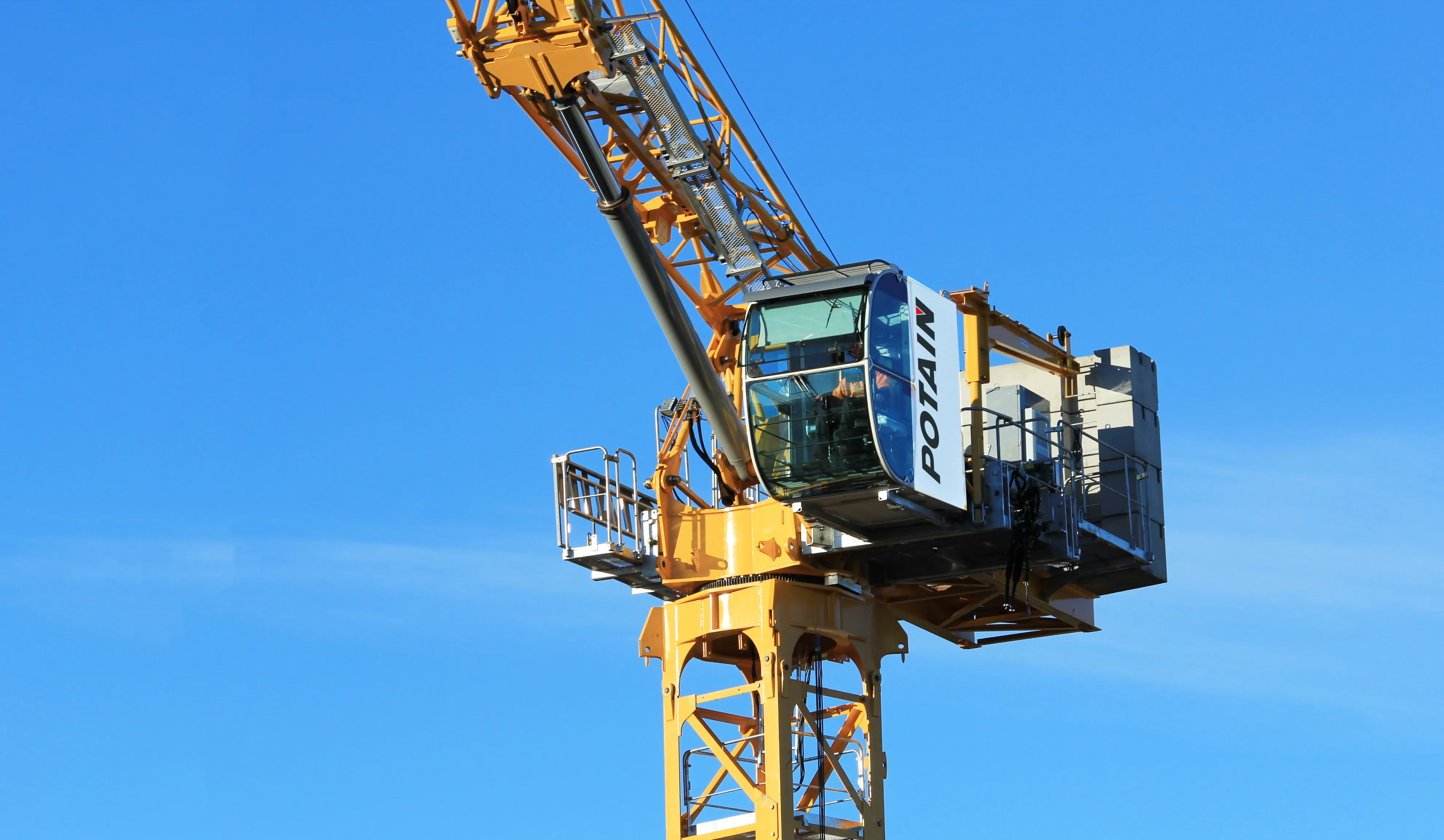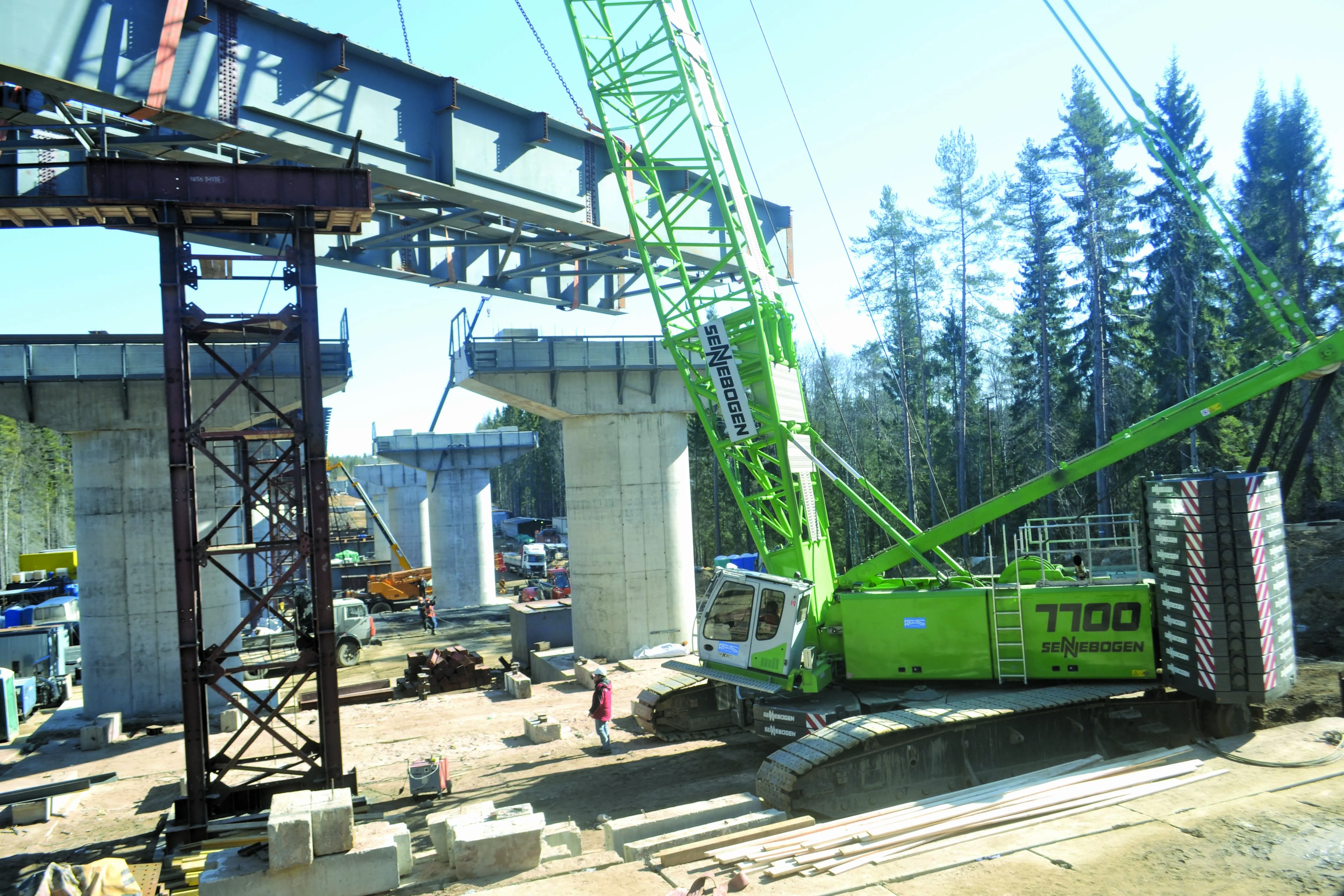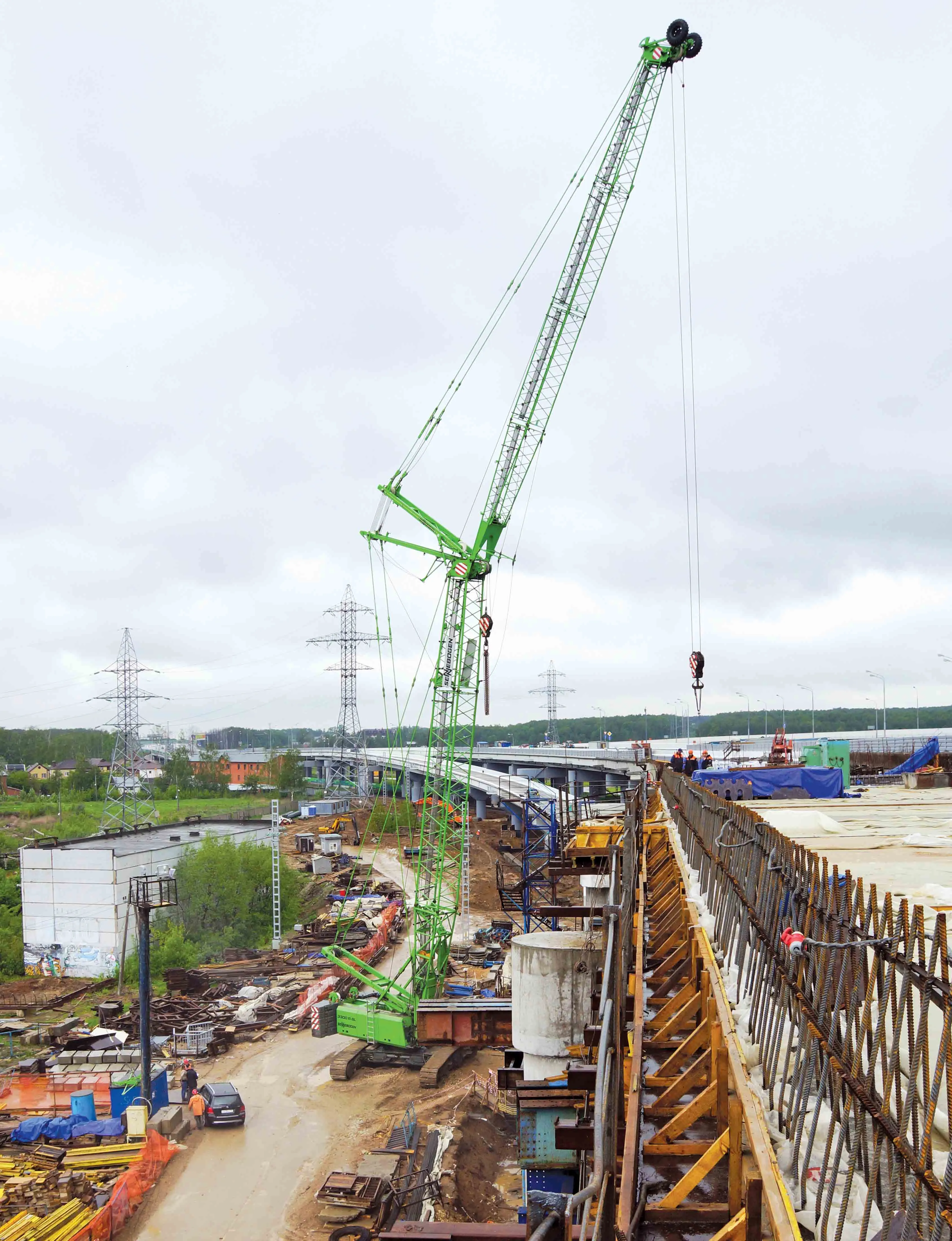
Featuring new technology, the crane is said to combine the advantages of
Maximum capacity for the MCH 125 is 8tonnes, while the maximum jib length is 50m. Tip capacity is 2tonnes and maximum line speed is 100m/min when fitted with the 60 LVF 20 hoist. The crane’s design offers a number of advantages, including fast erection and dismantling. The topless design means less space is needed on site, as there is no cathead to assemble at ground level before installation.
The crane also uses Potain’s VVH hydraulic luffing technology for vertical movement of the jib, which eliminates the need for luffing wire ropes. With VVH technology, the MCH 125 is able to raise from a horizontal level to 87˚ in less than 2 minutes. The hydraulics are pre-connected at the factory, avoiding the need to perform this duty during on-site assembly.
The hydraulic luffing design means the crane has a shorter counter-jib and out-of-service radius when compared with rope-luffing alternatives, freeing up valuable space on congested job sites. The upperworks of the crane, including its full 50m of jib, can travel on just four trucks. Assembly to a height of 40m can be achieved in less than 6 hours.
Operation is said to be smooth and quiet; and for better utilisation for fleet owners it can be mounted on existing 1.6m or 2m mast sections from the manufacturer’s current range. Jib sections are from the MCR range of luffing jib cranes. There are five jib configurations available, ranging from 30m to 50m, in 5m increments.
The MCH 125 will be sold and supported through the extensive regional Potain dealer networks. The crane is available for sale throughout Asia, Africa, Oceania, the Middle East, Russia, the CIS countries and Latin America.









